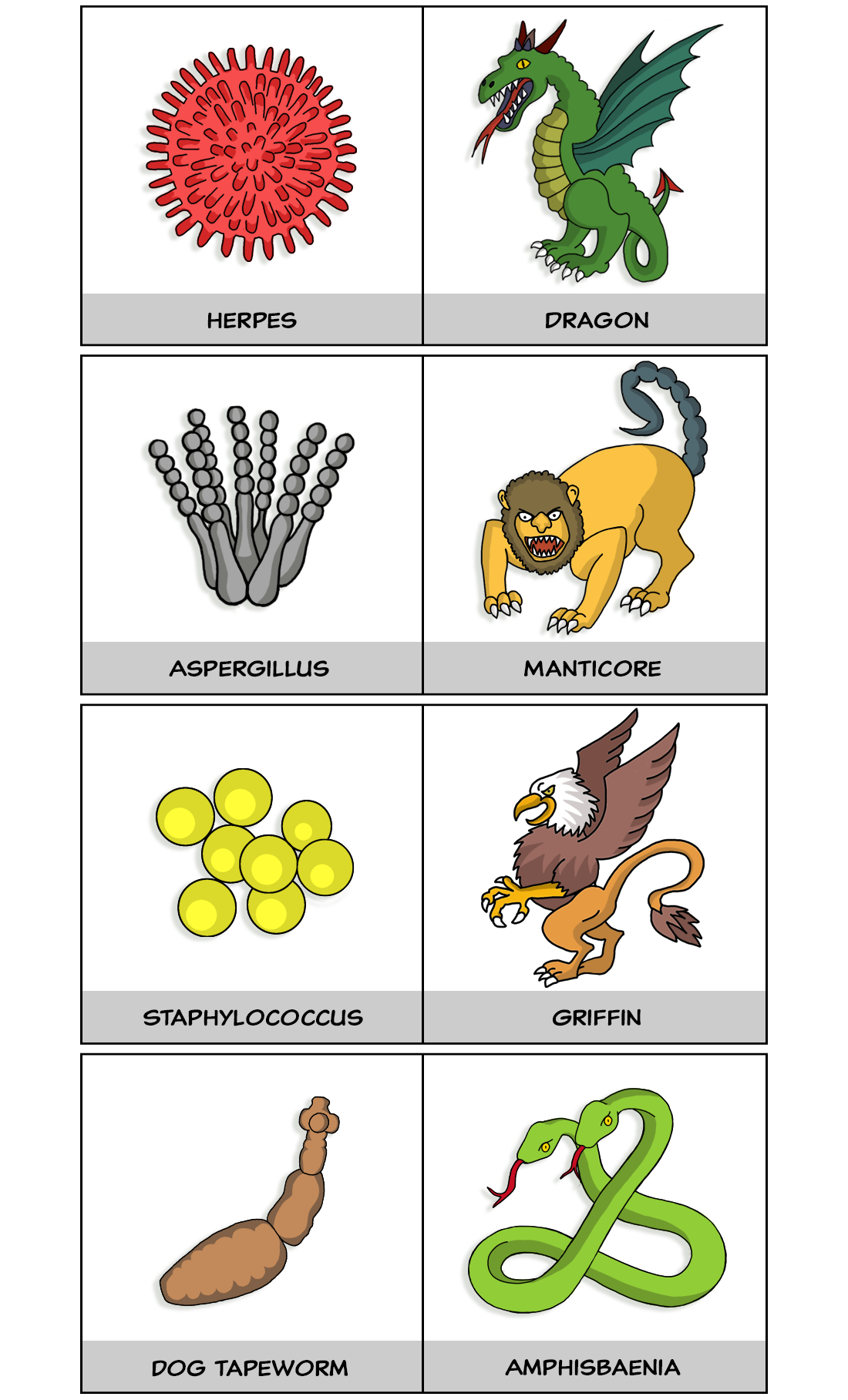ALLERGY: THE HISTORY OF A MISUNDERSTANDING
1.16
The immune defence as a battlefield
If we imagine the immune defence as an allegorical castle, there are numerous dangers that may assail it. They include not only attackers from the outside, but also dangers from the inside.
Like every fabled castle, its garrison faces serious attackers: mighty dragons that fly over the ramparts or mythical beasts with the body of a lion and the stinger of a scorpion, so-called manticores, that may cling to walls in order to destroy them. There are powerful gryphons and double-headed serpents, the latter trying to settle in the guts of the castle in order to devour it slowly from the inside.
The metaphorical beasts may illustrate the perils threatening our body. Viruses like herpes invade it, comparable to our dragons. Aspergillus is a mould that may, for example, cause fungi to grow in the lungs, if a person’s immune system is weak. This fungus then clings to the mucosa like a manticor to a castle wall. Bacteria intrude like huge and powerful gryphons. And parasites try to nest in an organ – for instance tapeworms – akin to our double-headed serpent.

The invaders.
Sometimes a member of the garrison itself turns vicious, this would be the equivalent of a mutated malignant cell, that may result in cancer if not eliminated early. Or it might even defect to the enemy and cause havoc from the inside, ie an immune cell that becomes autoreactive attacking structures of its own castle, leading to an autoimmune disease.
It also happens that the castle’s lord is in a bad mood, making mistakes. He identifies harmless exogenous creatures as noxious and orders the archers and knights to attack. Majestic cranes and unassuming gamecocks or ambling ostriches are all of a sudden deemed bad. Centaurs, whose services could be engaged, are marked as enemies. Archers or knights attack them. The garrison harms itself, starting an unnecessary quarrel – an allergy. This situation depicts an immune system that evaluates intrinsically harmless external elements like nickel, food, pollen, or drugs as harmful allergens. The mast cells then attack the alleged intruder with their IgE antibodies, or T cells attack glittering jewellery engaging in a defence that is not necessary, but unfortunately very effective leading to allergic symptoms.
Thus, there are a lot of dangers our garrison might have to deal with. Let us contemplate them and the processes involved.
Every castle is exposed to the elements, too. Rain and storms induce cracks. Water may soak in and rot the foundations. A fire might destroy buildings. In these occurrences the ramparts are weakened and the garrison’s strength might be fully taken up by the endeavour to repair ongoing damage and protect the castle from complete ruin. In the body, this corresponds to incidents of irritation or toxicity.
Let us assume a noxious microbe tries to settle on the skin or mucosa. Defensins and complement first try to eliminate them – the pitch and rocks thrown from the ramparts on a scaling enemy.
Should the enemy succeed in getting on the ramparts, the sentinels will raise the alarm as they start to fight. In the immune system this is the point in which an intruder has gained access to the organism. Macrophages and neutrophils engage in the defence.
The alerted Adalbert – in the immune system the antigen presenting cell ACP – takes stock of the situation. He recognizes the enemy and orders either archers or knights to attack. After a training period, archers move in and shoot with a large number of arrows at the enemy. This corresponds to an antibody-mediated reaction in the immune defence.
In case of an attack by gryphons – or in the immune system the attack of an aggressive bacteria – his Lordship will summon the fiery knights. They will fight side by side with the macrophages to expel the danger. These knights correspond to T cells in the immune defence.
Finally, the lady intervenes and brings the struggle to an end – her ladyship pacifies the hot tempered warriors, one of the manifold functions of T-regulatory immune cells.
Comparable events take place in case of an allergy to pollens, food, or even drugs. The respective fierce reaction causes inflammation and harm to the patient. But here also the lady may intervene and bring the struggle to a hopefully lucky end.
In case that one of the components lacks power, for instance, if the archers are too weak to aim and shoot, or the knights have lost their weapons, the situation may end in havoc. In the immune system this would translate into circumstances in which even a less aggressive bacteria can overwhelm and destroy the whole system – an example of what may happen in immune deficient patients.
This shows that immune reactions require a well-orchestrated and tightly controlled sequence of events. Timely initiation and termination are mandatory in order to avoid the defence reactions to be too weak or too strong. Should initiation or termination be inadequate and the reactions feeble or excessive, they may both result in harming the organism.
